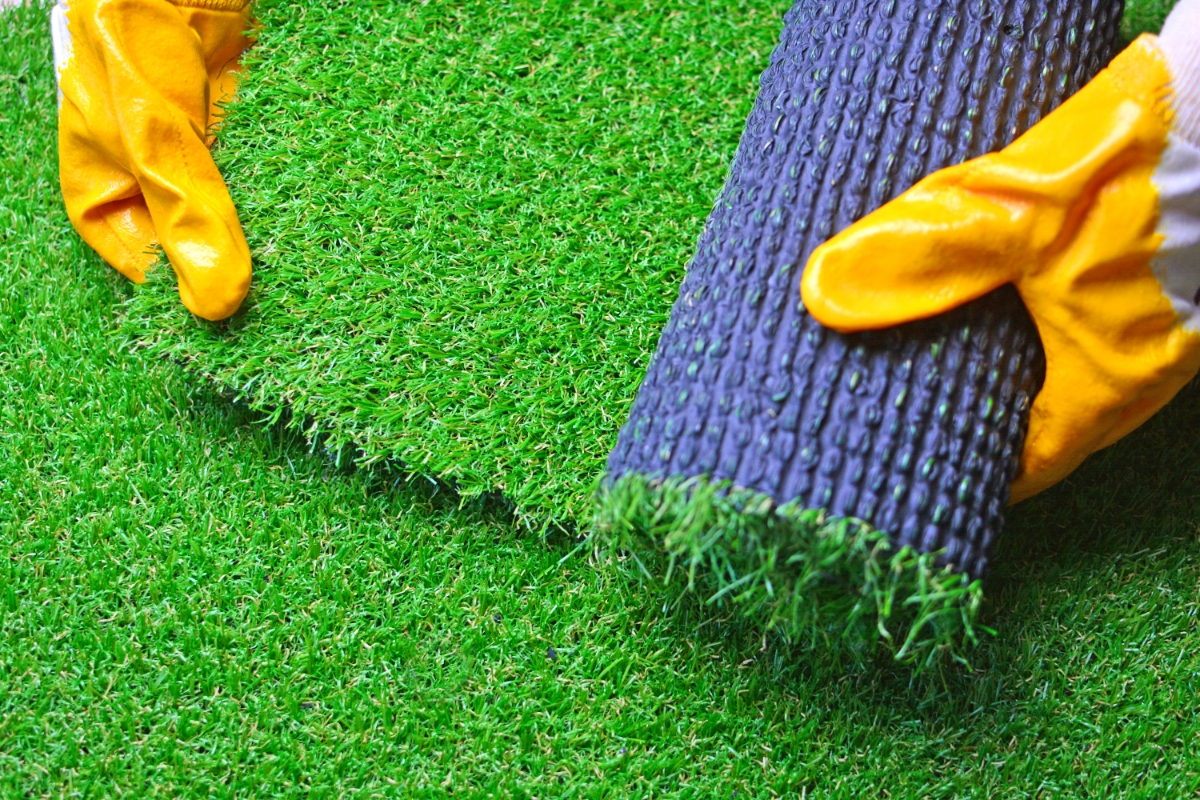Synthetic grass is a low-maintenance alternative to natural grass. As the demand for artificial grass grows, so will the varieties of available turf. With the many varieties of artificial turf in the market, it can be challenging to determine which type works well with your outdoor space. Here is what to look for when selecting synthetic turf for your outdoor areas:
Drainage
When buying an artificial lawn, you want an option with an excellent drainage system to keep your outdoor area from flooding whenever it rains. Look for synthetic turf with a perforated backing that allows water to flow through. Some types of synthetic lawns have tiny holes around their stitches through which water passes. These holes are not easily visible, so it helps to ask your supplier about the drainage when there are no perforations in the turf’s backing. Installers must prepare a base layer with compacted aggregate which drains water that escapes through the turf’s backing. Ask your installer to test the base layer’s drainage by pouring water over it using a hose before laying the artificial grass.
Durability
Outdoor spaces are exposed to the elements and foot traffic throughout the day. When selecting synthetic grass, evaluate its ability to resist weather damage. Look for high-quality artificial turf with UV-stabilized fibers to keep it from fading due to sun exposure. If you use your outdoor area to play games or host events, it will likely experience heavy foot traffic. For heavy traffic areas, you want a synthetic turf product with a higher face weight. The higher the face weight, the denser it is, enhancing its resistance to heavy foot traffic.
Quality
High-quality synthetic turf looks more realistic and is more durable than low-quality varieties. Most high-quality artificial lawns are made from polypropylene or polyamide fibers. The backing on these lawn varieties is even and the tufts have a uniform shade. Another indicator of high-quality artificial grass is the presence of thatch blades. These are brown, curly fibers underneath the straight blades that help give the lawn the coloring of natural grass. Thatch adds to the density of your artificial lawn and helps keep the straight blades in position. Avoid artificial lawns with shiny blades as they look less realistic. They tend to absorb heat from the sun, making them hot to the touch. Ask your supplier for samples of their synthetic turf to find one you like.
Maintenance Requirements
Artificial lawns are a low-maintenance option, but some varieties require more maintenance than others. Synthetic turf with a shorter pile height is ideal for a larger outdoor space as it gives the look of a freshly mowed lawn and requires the least maintenance. Synthetic lawns with longer pile heights are ideal for smaller spaces as you will need to brush the turf to keep its blades upright. Inquire about the maintenance requirements for different types of artificial grass and get a turf that is easy for you to maintain.
Budget
Factors like quality, pile height, and density determine the cost of synthetic turf. Premium quality synthetic grass with a higher density, softer texture, and quality materials have a higher price. The size of the artificial lawn also contributes to its cost. While higher-quality synthetic turf costs more, it saves you money in the long run as you may use it for years without needing a replacement.
Upgrade Your Outdoor Space With Artificial Turf
Natural grass can be time-consuming to maintain, and it does not keep its look all year round. Replacing natural grass with artificial turf allows you to enjoy green outdoor or indoor spaces with minimal effort. When looking at artificial grass varieties, evaluate their quality, durability, drainage capabilities, and maintenance requirements to make an informed choice. Invest in a high-quality artificial lawn to get long-term value for your money.






Leave a Reply